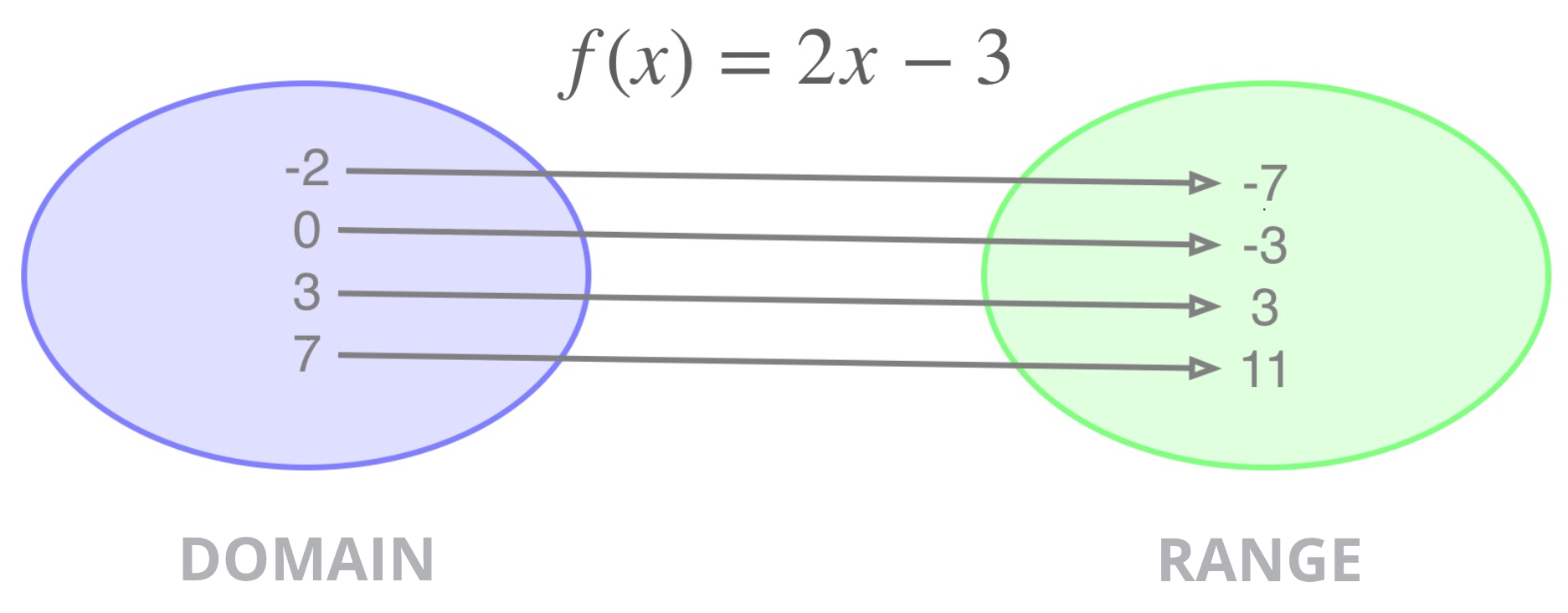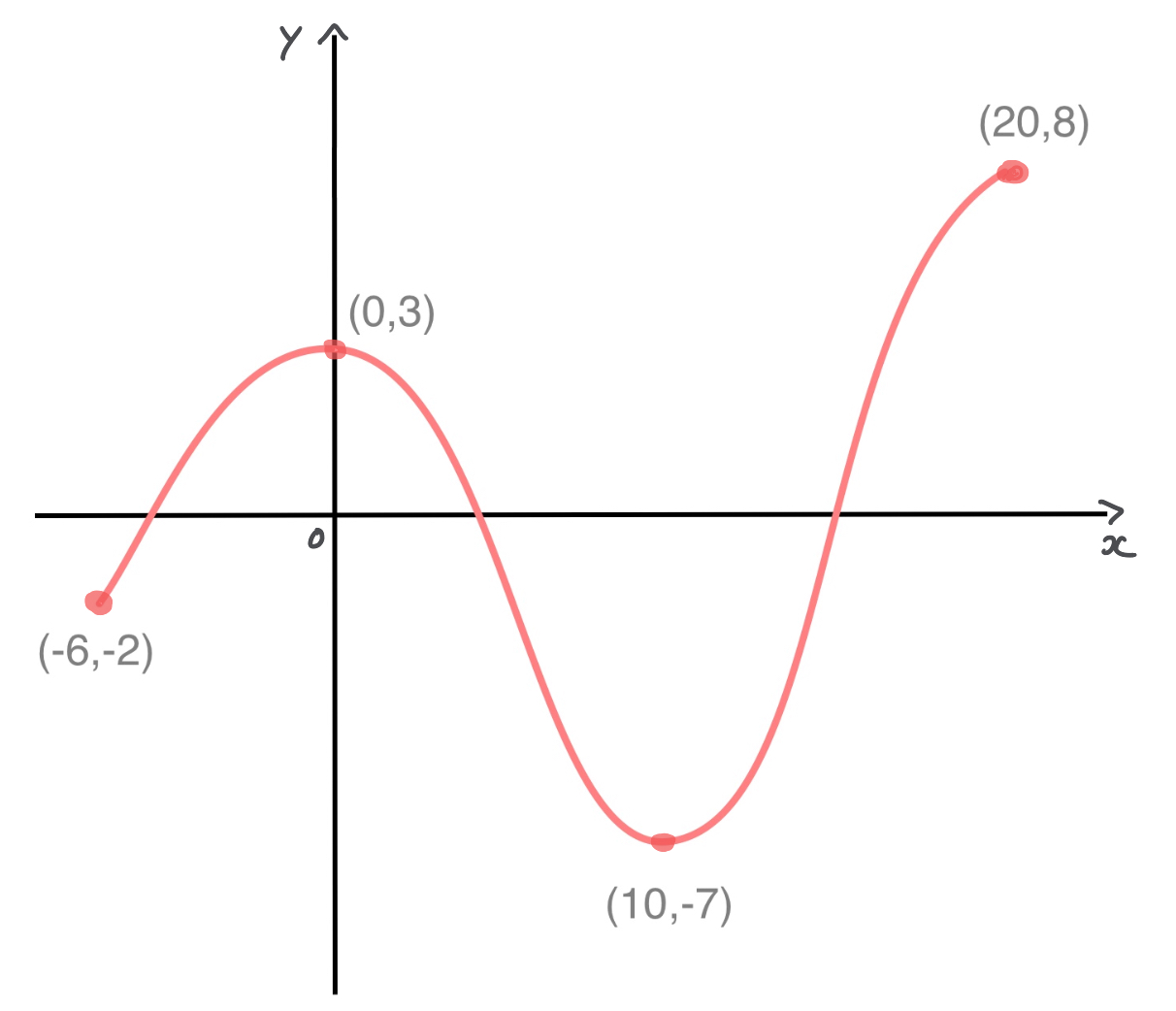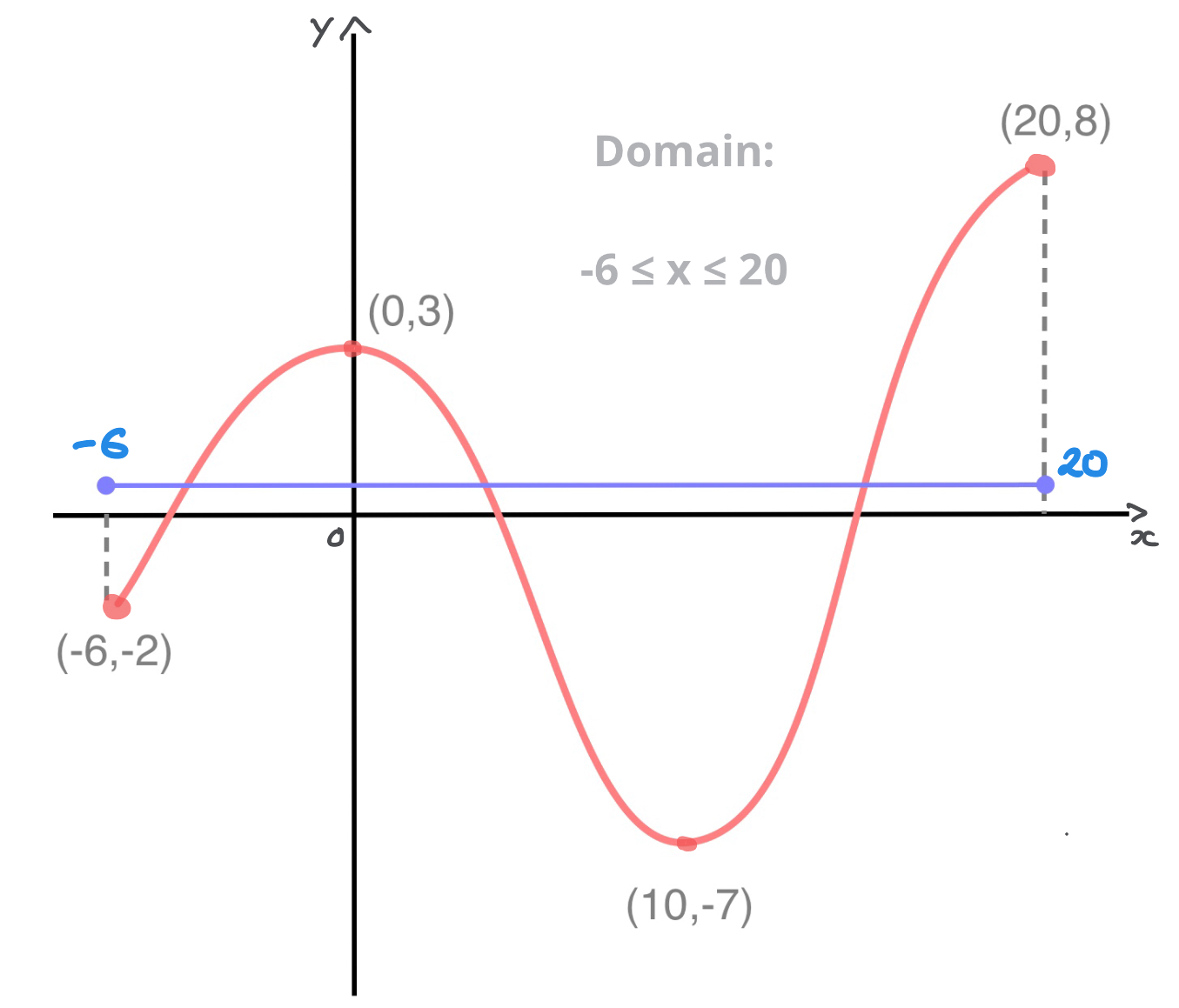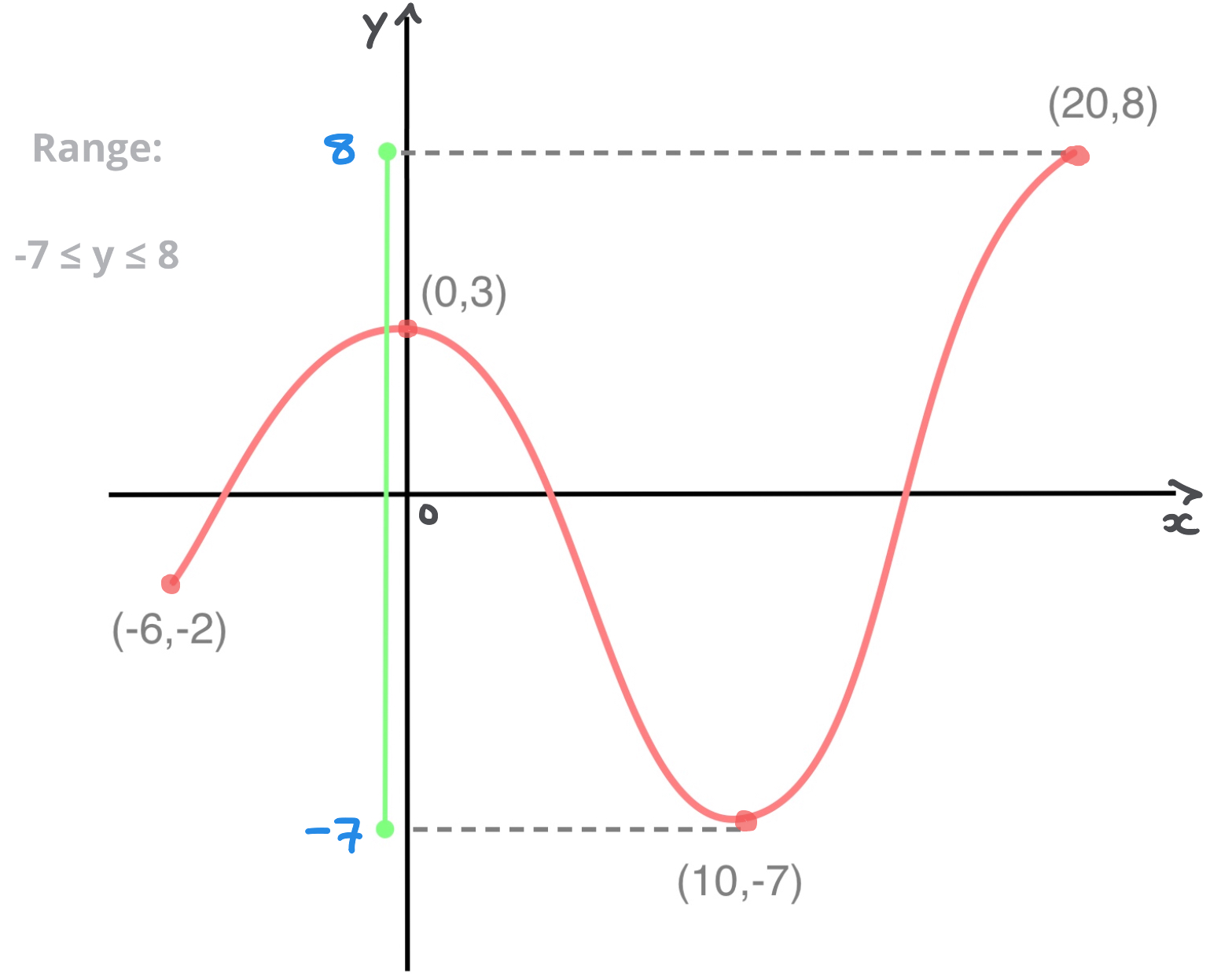Domain & Range of a Function
Given a function, \(f(x)\), there may be some values of \(x\) for which the function isn't well defined.
For instance, if we were asked to calculate the value of the function \(f(x) = \frac{2}{3x+6}\) when \(x = -2\) we would have some trouble.
Indeed, if we replace \(x\) by \(-2\) in the expression for \(f(x)\) we obtain:
\[\begin{aligned} f(-2) & = \frac{2}{3\times (-2) + 6} \\
& = \frac{2}{-6+6} \\
f(-2) & = \frac{2}{0}
\end{aligned} \]
Since it is impossible to divide by zero, it is impossible to calculate the value of \(f(x)\) when \(x = -2\).
This highlights the importance of defining the domain of a function.

Example 2
Consider the function \(f(x)=x^2-1\) for the following values of \(x\): \[-3,-2, 0, 1, 2\] \[\begin{aligned} f(-3) &= (-3)^2 - 1 \\ & = 9 - 1 \\ f(-3) &= 8 \end{aligned}\]
Calculating all of the other values of \(x\) this way we find:
- For the input value \(x = -2\), the output value is: \[\begin{aligned} f(-2) &= (-2)^2 - 1 \\ & = 4 - 1 \\ f(-2) & = 3 \end{aligned}\] So \(-2\) maps onto \(3\)
- For the input value \(x = 0\), the output value is: \[\begin{aligned} f(0) &= 0^2 - 1 \\ & = 0 - 1 \\ f(0) & = -1 \end{aligned}\] So \(0\) maps onto \(-1\)
- For the input value \(x = 1\), the output value is: \[\begin{aligned} f(1) &= 1^2 - 1 \\ & = 1 - 1 \\ f(1) & = 0 \end{aligned}\] So \(1\) maps onto \(0\)
- For the input value \(x = 2\), the output value is: \[\begin{aligned} f(2) &= 2^2 - 1 \\ & = 4 - 1 \\ f(2) & = 3 \end{aligned}\] So \(2\) maps onto \(3\)
Can be illustrated in a mapping diagram, as shown here:

Definition - Domain of a Function
Given a function, its domain is the set, or interval, of numbers for which the function is well defined and can be calculated.
For the function we saw in the introduction, \(f(x) = \frac{2}{3x+6}\), the domain would be all real numbers other than \(-2\).
We write this:
\[\text{Domain} = \left \{ x \in \mathbb{R} | x \neq -2 \right \}\]
How to Find the Domain
To find a function's domain we should ask ourselves:
To answer this question we must always remember:
- Denominators cannot equal \(0\).
- Expressions inside square roots (radicands) cannot be negative.
Must Know Examples
Example 1
Find the domain of the function defined as: \[f(x) = \frac{3}{2x-4}\]
Example 2
Find the domain of the function defined as: \[f(x) = 2\sqrt{x+3}\]
Example 3
Find the domain of the function defined as: \[f(x) = \frac{3}{x^2-4}\]
Example 4
Find the domain of the function defined as: \[f(x) = \frac{3}{\sqrt{2x+8}}\]
Tutorial
In the following tutorial we review the method for findng the formula for the \(n^{\text{th}}\) term of a linear sequence. Watch it now.
Reading Domain & Range from Graphs
Given a function \(f(x)\) and its curve \(y=f(x)\), we can read both the domain and range as follows:
- The domain is the interval of \(x\) values seen when we project the curve on to the \(x\)-axis.
- The range is the interval of \(y\) values seen when we project the curve on to the \(y\)-axis.
Example
The following graph shows the curve of some function \(f(x)\):

Using the graph, state:
- the domain
- the range.
Solution
-
To find the domain, we look at the interval of \(x\) values seen by projecting the curve onto the \(x\)-axis; this is done here in blue:

-
To find the range, we look at the interval of \(y\) values seen by projecting the curve onto the \(y\)-axis; this is done here in green:

Exercise
Find the domain of each of the following functions:
- \(f(x) = \frac{3}{2x-4}\)
- \(f(x) = \sqrt{x+5}\)
- \(f(x) = \sqrt{3x-9}\)
- \(f(x) = \frac{7}{9-x}\)
- \(f(x) = \frac{x}{x^2-4}\)
- \(f(x) = \frac{2x}{x^2+4}\)
Answers Without Working